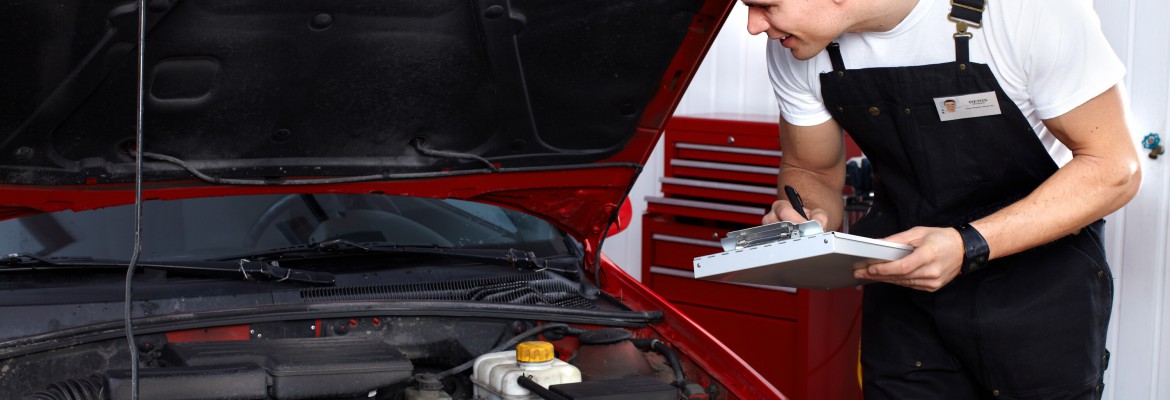The Relevance of Motor Vehicle Inspections in Nova Scotia
While the merits of MVI programs are still debated by many who fail to see their value, one pundit sees things a little bit differently.
By David Giles
Nova Scotia’s Motor Vehicle Inspection (MVI) program is now several years, if not decades, old. I recently came across a 1956 Dodge Regent that had an expired 1976 motor vehicle inspection sticker on it. While this vehicle’s sticker expired almost 45 years ago it shows that the program—which commenced in 1967–isn’t new to this province.

What is new is the process, inspected items and the enforcement of the program. Just recently it was revealed by CBC that fake (lick-and-stick) stickers were showing up in large quantities on vehicles. That news article stated that over 3000 vehicles in less than 18 months were ticketed for expired and/or illegal stickers (counterfeit). While not all the ticketed vehicles had fake stickers, many of them had defects in their safety systems that would have failed a motor vehicle inspection.
The question I get asked from many people is, “Is the MVI program worth it? Do we really need a system where a vehicle is inspected every two years?” While an interesting question, I did a little investigating with four different shops. I asked them on average how many vehicles came into the shop that pass with no defects under the current MVI checklist? One technician’s interesting response was, “Depends on the year”. Typically, when a vehicle is seven years or less, 80-90% have no defects to report. After this age the number drops to 50% and for vehicles 15 years up, only 20% would pass without any work. So, is the MVI program worth it? If I asked people with vehicles seven years or older if they knew of any problems, only 10% suspected any issues.
I was talking with a customer at one of the shops and he gave a great analogy. He said “the vehicle safety inspection is like me going to the doctor every year to get a check-up; they take blood, pee in a cup and do a series of tests. I do it every year as required by my employer, but the good news is that if the doctor finds something it may be caught early and that’s a good thing.”
I was thinking about that and wondered what if he went to the doctor and showed up with a coffee, chatted for a few minutes, and the doctor gave him the all-clear without checking anything? Then several years later he starts to get sick and finds out he has a disease that had gone undiagnosed for several years? Now his situation is dire as the treatment may not be as effective as it might have been had it been caught years earlier. Your vehicle’s health check up could be looked at the same way: not identifying something procactively may have expensive or even catastrophic consequences later on.
Understanding the rules and requirements for current MVI laws may be confusing and hard to understand. I’ve heard from many people that they feel it’s a money grab and does nothing to help with making vehicles safer on the road. When putting the question to an accident investigator, they respond like this: A vehicle loses control and crashes into another vehicle. The vehicle has bald tires and it was raining, which is the primary factor or catalyst for the accident. What if it’s not raining and the vehicle is involved in a collision? Then it goes to driver inattention, road conditions or speed, the tires are still not the primary factor. So why then, do we have inspections? In circumstances where the catalyst is the weather, driver inattention, speed or road conditions the vehicle won’t become the main contributor to those circumstances.
Looking at it another way, if it’s raining and you have good tires you’re less likely to have a problem than if you have bald tires. If it’s raining and you have bald tires and you go slower, you are less likely to have a problem than if you go faster with bald tires. The weather conditions and speed become primary factors in an accident, not the tires. This means that a vehicle safety inspection can help identify these defects, including identifying components that could become a contributor, like the tires in the above example.
When taking your car in for your MVI, think of it as a health check-up, talk with the technician looking at your vehicle. Get some advice on maintaining your vehicle and become familiar with what’s checked and what isn’t. This will give a better understanding of why we have inspections and what purpose they serve for vehicle safety. A tip I give people is “don’t wait until the end of the month of the expiry to have your vehicle checked” You have more flexibility in getting a second opinion if you are proactive with your MVI inspections.
I believe the MVI program still has a valid place for safety on our roads. Without it many vehicles would go for prolonged periods of time with worn out components or potentially dangerous issues. Without some sort of “check” many drivers would never know of an issue until it was too late. Nova Scotia has some of the most adverse road and weather conditions in Canada. The abuse our vehicles take every year from our climate and roads makes this program a way of ensuring vehicles are safe to all stakeholders. Getting a vehicle inspected should bring peace of mind for those driving on our roads.


